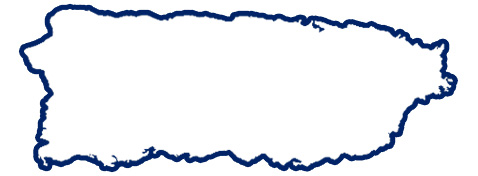- Personal
- AccountsHow can we help you?ToolsMy Online Bank 24/7
- Access your accounts
- Deposit and withdraw
- Pay your bills
- Transfer funds from your accounts
- Credit Cards & LoansHow can we help you?ToolsApply for a personal loan to consolidate your debt
- From $2,000 up to $75,000
- 12 to 84 months’ terms
Benefits for credit card customersLearn more - Insurance & InvestmentsNeed insurance?Plan for the futureQuote an Insurance
Contact one of our representatives.
Insurance ClaimsBegin your claim here, call 787.706.4111 (dial 1 for Customer Service) or visit our offices on workdays, Monday through Friday from 8:00 a.m. to 5:00 p.m.
- ServicesTargeted SegmentsMore ServicesMy Online Bank 24/7
- Access your accounts
- Deposit and withdraw
- Pay your bills
- Transfer funds from your accounts
Turns and Appointments in branchesLearn more
- Accounts
- Business
- Popular One
- About us

How can we help you?
TWELFTH DECADE
2003 – 2013
Puerto Rico
- For the past five years, the U.S., and thus, Puerto Rico, had been hard hit by the worldwide political and economic crisis.
- Aníbal Acevedo Vilá won the 2014 elections and Puerto Rico continued to show very weak growth. In 2006 the economic destabilization would show its effect.
- In 2006, the benefits under Section 936 ended and many factories had already left. More than 40,000 manufacturing jobs had been lost with its multiplying effects.
- For lack of funds to pay the payroll, the government partially closed and over 90,000 public employees were left without a salary during this period, creating an environment of insecurity and lack of faith on the island.
- The construction sector was still paralyzed; the cost of electric power and transportation continually increased and there was a significant decrease in sales.
- The prolonged contraction caused adverse effects in all economic sectors: the levels of investment, income, consumption and employment, and more alarming, the government fiscal crisis did not allow the immediate adoption of measures to confront the recession.
- The migration of professionals and other workers increased, weakening the labor force. Close to 40% of the population was receiving some type of social assistance.
- In 2008, Luis G. Fortuño won the governorship. He formed the Economic and Fiscal Reconstruction Advisory Council (CAREF, for its Spanish acronym), composed of a multidisciplinary group, and Richard L. Carrión was asked to chair the group. Among all the members a plan was designed with a series of measures, among which were the shrinking of government and layoffs or reduction of work hours. These actions generated numerous protests.
- In 2012 Fortuño lost the elections to Alejandro García Padilla. The decade came to an end searching for solutions.

Banco Popular
- Under this environment, local banks confronted lower margins, a slow economy and general instability in the financial services industry. Several banks collapsed.
- FDIC assumed jurisdiction over three financial institutions in Puerto Rico: R-G Premier Bank, Westernbank and Eurobank.
- Banco Popular did not experienced the usual net income and this was an uphill situation. Among other measures, a stricter control of expenses, without affecting strategic investments, was adopted to mitigate the impact of the crisis.
- Banco Popular North America and its subsidiary E-Loan, as well as Popular Financial Holdings, Co. and Equity One reported millions of dollars in losses due to the large volume of subprime mortgage loans. The U.S. experienced a worse mortgage crisis than in Puerto Rico.
- Puerto Rico was not affected as much by the mortgage crisis since the lines of credit over the equity had no wide acceptance. It was a product that was not offered.
- BPNA losses were so high that it placed Popular in a very fragile position. A safety net came when President George W. Bush signed the Troubled Asset Relief Program (TARP) Act. This action sought to avoid the collapse of more enterprises contaminated with subprime mortgages.
- Popular had to raise capital and improve its assets. Richard L. Carrión dedicated himself to that mission.
- One of his moves had to do with EVERTEC. In 2010, after numerous negotiations, an agreement was reached. The company was valued at $870 million and Popular, sole owner, sold 51% participation for $528.6 million.
- In 2009, Popular acquired Citibank’s retail business, and in 2010, Westernbank’s assets.
In 2007, more than 70 companies dedicated to granting mortgage loans were bankrupt, with incredible high numbers of unpayments in the mortgage sector in the U.S.: six million contracts for $6 billion. The crisis also reached European Community nations, and in no time also to the worldwide community.

Music
- This was the decade of urban music: the music that comes from the streets, from the public housing developments, from upset people.
- This style includes hip hop, rap and reggaeton. Hip hop surged in 60s and 70s and rap is part of hip hop. Rap is a culture, a lifestyle (dressing with caps, dark glasses, jeans worn well below the waist… jewelry).
- Those who dance in the streets: Beat-boys (they dance at the beat of sound), Bboying culture. Many DJs and much graffiti in the streets. The pioneer in the U.S. was James Brown, and specifically in the Bronx, DJ Kool Herc.
- In terms of reggaeton, it is a bit of everything. It’s like the Latin version of hip hop and its roots are in Jamaica. Many Jamaicans migrated to Panama to work in the construction of the Canal in the early 1900s and brought this music with them. The most notable exponents were Edgardo Armando Franco, “El General”, native of Panamá and Luis Armando Lozada, “Vico C”.
- Reggaetón was an underground music, but became popular with Tego Calderón, Don Omar, Daddy Yankee, Ivy Queen, Wisin y Yandel, Tito el Bambino… Also, DJ Playero and DJ Nelson produced the first reggaeton tracks bringing the genre to the island: Tony Dice, Nina Skya, RKM y Ken-Y, Julio Voltio y René Calle 13.
- With Daddy Yankee and his “Gasolina”, the genre crossed barriers, in the U.S. and internationally.
- Trap style differs from reggaeton. While reggaeton was initiated in Panama, trap surged in Southern U.S. when rappers began to mix rhythms. Trap is sharper and more cutting than reggaeton. It talks about drugs, sex, violence… and arms define a new era. Ozuna and Bad Bunny, and foreigners as J Balvin and Maluma are some artists of this genre.
- The popularity of urban music has marked the years to come and is heard and interpreted internationally.

Christmas tree
- Christmas trees were elegant with silver, bronze and pink tones. More flamboyant and interest in extending the same ornaments in the rest of the areas.
 Puerto Rico
Puerto Rico 


